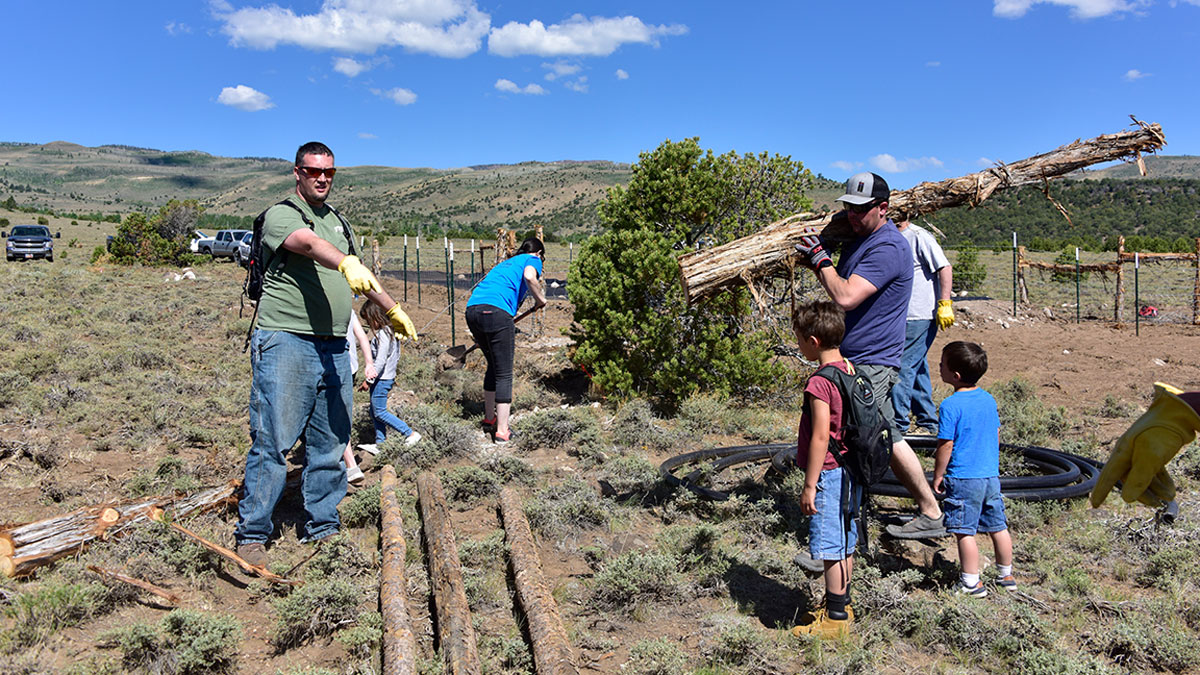It’s become a tradition in the Beehive State. Every summer over the past decade, volunteers from the Rocky Mountain Elk Foundation gather for their summer rendezvous somewhere in the mountains of Utah to construct or shore up wildlife water sources, or guzzlers, for the benefit of elk and many other species of bird and animal life.
In 2020, 47 volunteers from six RMEF chapters, including six children, worked alongside nine other volunteers in the Last Chance area of the Fremont River Ranger District on the Fishlake National Forest in the central part of the state. The area is an incredible wildlife habitat ecosystem with a variety of vegetation types and elevations. It serves as summer range in the higher elevations while the lower elevations serve as transition and winter range, however water is lacking and drought conditions seem to be more frequent.
Volunteers rolled up their sleeves and erected approximately two acres of new fencing around newly installed guzzlers, four 1,800-gallon units for big game and one smaller unit for sage grouse. Fencing is utilized to be wildlife-friendly yet restrictive for livestock. Guzzlers are systems that collect and store water from rain or snow for wildlife to drink during dry, arid parts of the years.
Since 2011, RMEF volunteers installed, fenced and/or funded the construction of 24 water guzzlers on the Fishlake, Manti, Monroe Mountain and Pahvant Elk Management Units and the Pine Valley Deer Management Unit. Along the way, volunteers developed both a knowledge and drive to get the job done. And they have a good time, too.
“The help we get each year from the RMEF group and other volunteers allows us to complete our guzzler projects in the current season. We would not be able to finish the projects with our current U.S. Forest Service (USFS) work staff and budgets,” said Kreig Rasmussen, USFS wildlife biologist. “The RMEF group from Utah has helped us with guzzlers for several years now and when they arrive on the project I need to make sure I have all supplies in place. The experience they have gained over the years allows them to go right to work and proceed with very little direction and at the end of the day the guzzlers are ‘rain ready.’”
(Photo source: US Forest Service/Kreig Rasmussen & Troy Bennett)
